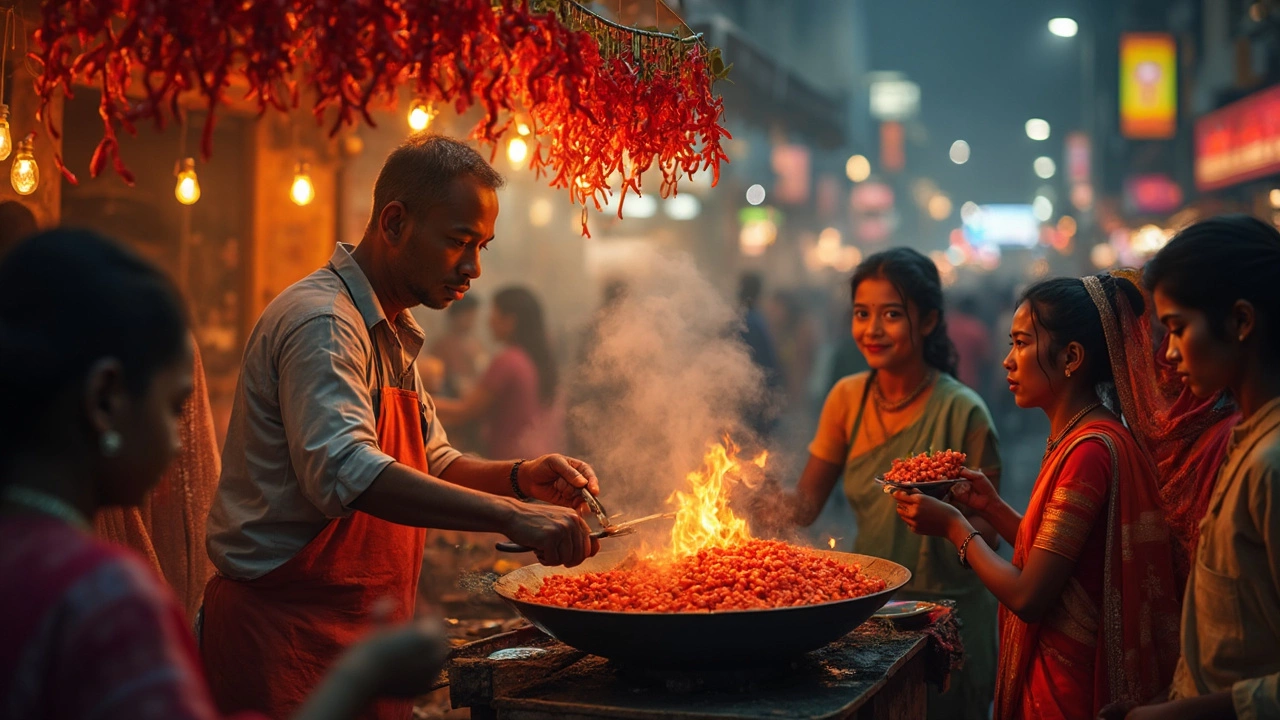Spicy States – Dive into India’s Hottest Regional Dishes
India is a big country, and every state has its own way of turning up the heat. From the fiery chilies of Andhra Pradesh to the bold peppery notes of Rajasthan, the “spicy states” tag gathers the most popular heat‑laden recipes that people love.
Why Some States Are Known for Heat
Most of the heat comes from chilies, black pepper, and special spice blends. In the South, especially Kerala and Andhra, red chilies are dried, ground, and mixed into masalas that give a deep, lingering burn. In the North, Punjab and Rajasthan use a lot of black pepper and dried red chilies, plus techniques like slow‑cooking in a tandoor that lock in flavor.
These regional habits affect everyday dishes. A classic Hyderabad biryani (the kind you’ll find in our “Is Biryani Hard to Cook?” guide) layers fragrant rice with marinated meat that’s been coated in a spice mix heavy on chili powder and cardamom. In Tamil Nadu, chutney is often cooked with a lid on to keep the spices from evaporating, giving a thick, fiery dip that pairs perfectly with dosa.
Cooking Tips From the Spicy States
Want to bring that authentic heat to your kitchen? Start with fresh, locally sourced chilies. Roast them lightly before grinding to bring out smoky notes, just like the chefs in Kerala do for their fish curry. When you’re working with a whole‑spice blend, remember to toast the spices in a dry pan – it releases oils and makes the flavor pop, a trick used in the “Black Things in Biryani” article.
If you’re worried about the heat being too much, add a splash of coconut milk or a spoonful of jaggery. That’s the trick behind many South Indian sweets that stay sweet without losing their spice edge, as explained in our “Ancient Indian Sweets” post.
Another quick fix is to balance the spice with acidity. A squeeze of lemon or a dash of tamarind can tone down the burn while keeping the flavor bright. This works great for tandoori chicken, which is traditionally grilled, not fried, and benefits from a little zing.
For those new to cooking spicy dishes, start with small amounts of chili powder and taste as you go. Our “Is Biryani Hard to Cook?” guide shows how to layer flavors gradually, so you don’t end up with a dish that’s all heat and no depth.
Finally, remember that heat is just one part of the taste puzzle. Pair spicy mains with cooling sides like raita, cucumber salad, or plain rice. That contrast is what makes the heat enjoyable rather than overwhelming.
Spicy foods also have some health perks. Capsaicin, the compound that gives chilies their heat, can boost metabolism and help with weight loss. In our “Best Indian Curries for Weight Loss” article we show how you can enjoy a hot lentil dal or a peppery chicken curry without piling on calories. Just keep the oil low and let the spices do the work.
Beyond health, heat is part of cultural identity. In many festivals, a hot dish signals celebration. For example, during the monsoon in Gujarat, people love a steaming bowl of rasam packed with chili, believing it wards off the chill. This ties food to tradition, making each spicy bite a story.
Explore the posts under the “spicy states” tag to see real‑world examples, from biryani tips to chutney tricks, and start cooking dishes that heat up your meals and your taste buds.
Which State Eats the Most Spicy Food in India? Street Food Showdown
Ever wondered which Indian state takes the crown for the spiciest eats? This article digs into India's spice obsession, focusing on street food that turns up the heat. You'll learn which region can't get enough of chilies, exactly what to order if you love spicy food, and even tips to handle the heat. We bust some myths about spice levels and share little-known facts that'll surprise even the most hardcore foodie. If you're chasing fiery flavors in India, this is your crash course.
